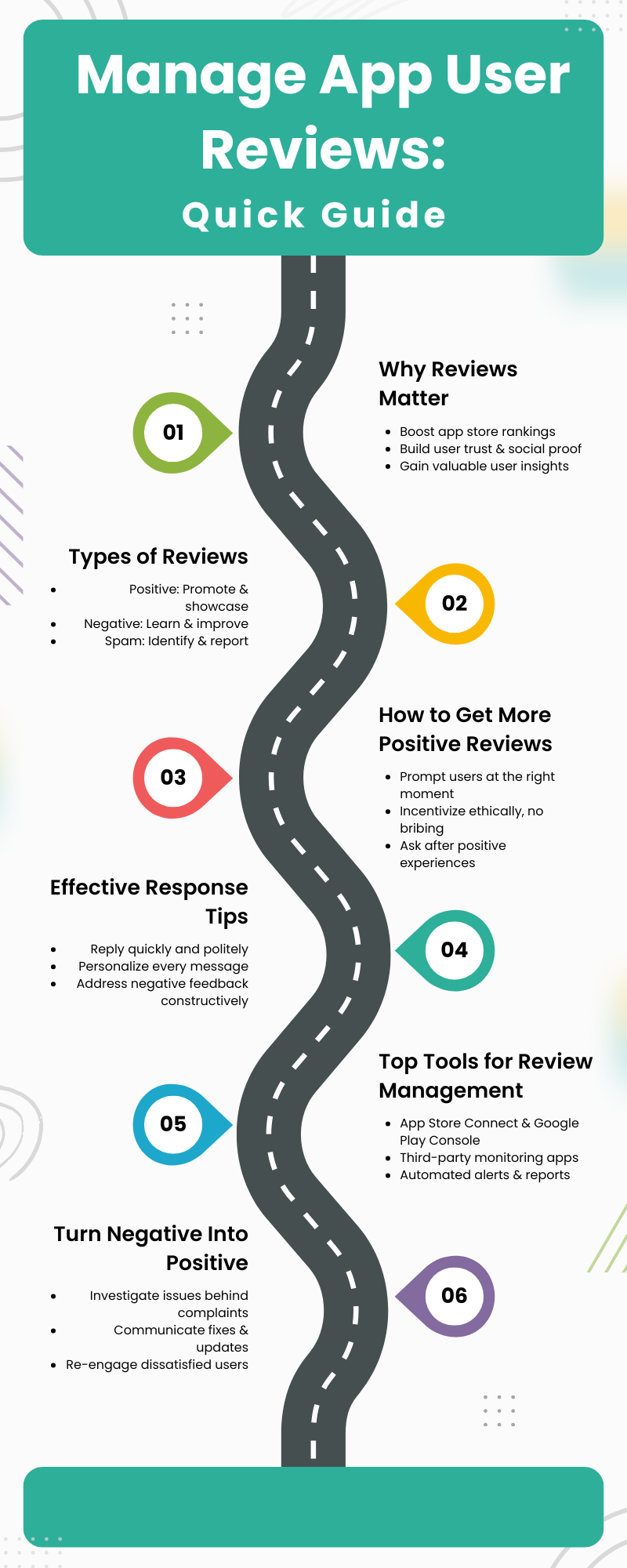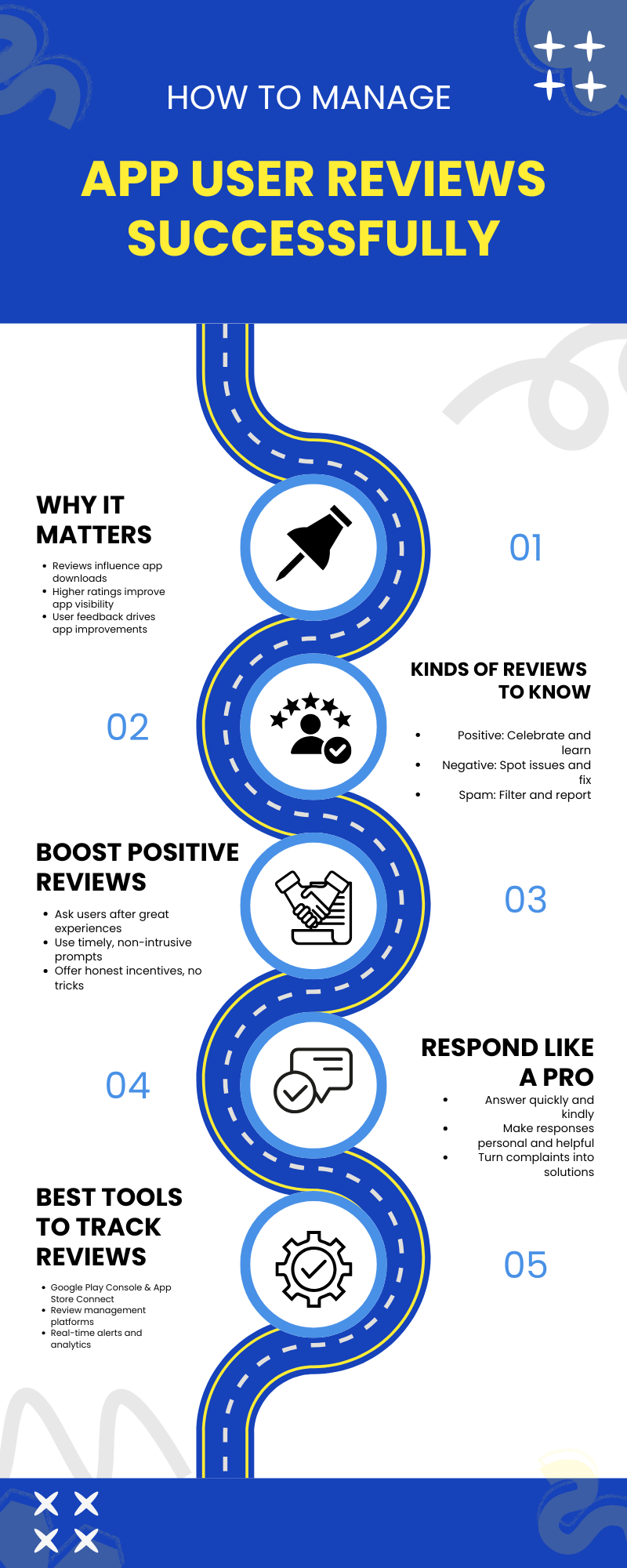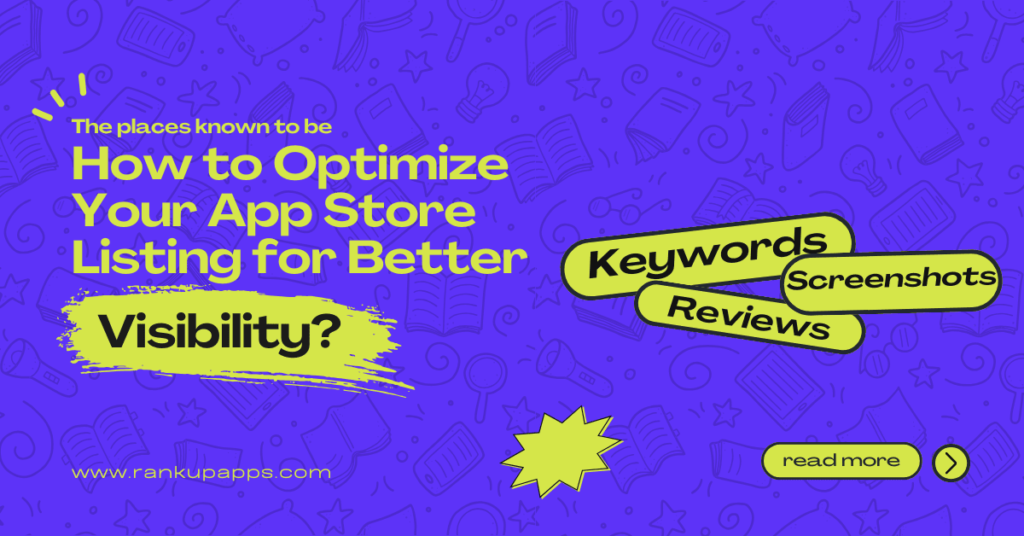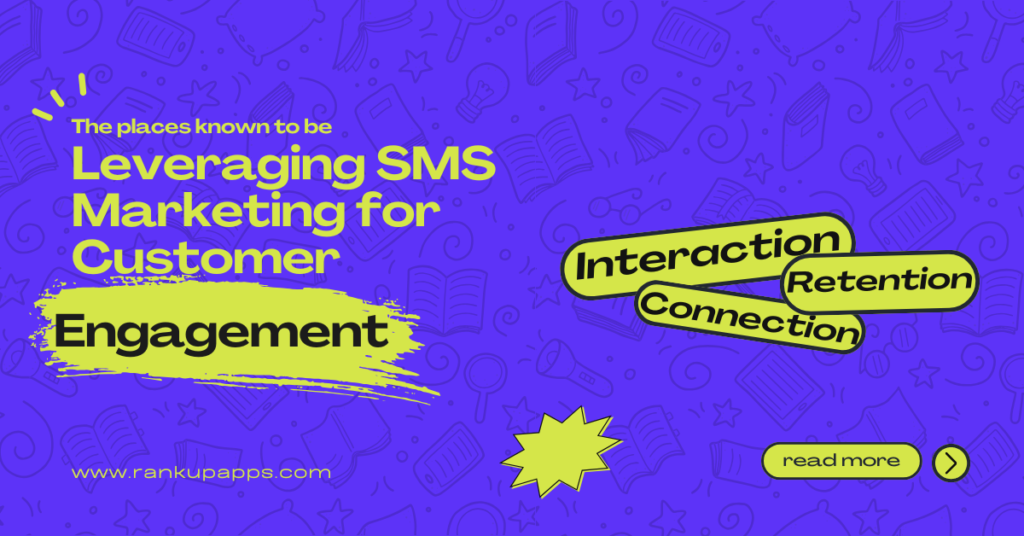To manage app user reviews means more than just replying to feedback. It’s about listening, learning, and improving your app based on what users say. Reviews directly shape your app’s reputation and can influence downloads. For example, quick and helpful replies to negative feedback show new users that you care. Positive reviews, when highlighted, boost credibility and trust. Managing reviews also helps uncover bugs, feature requests, or user experience issues you may have missed. In short, when you manage app user reviews effectively, you turn simple feedback into a tool for growth and long-term user loyalty.
Why Manage App User Reviews Matter?
- Choices are impacted by first impressions: Ratings and reviews are among the initial things clients see once they visit the app store. A 4.5-star app instantly feels more reliable than a 3-star one. That difference can decide whether someone downloads your app or skips it.
- App store ranking is affected by user reviews: The ranking algorithms of the Apple App Store and Google Play take user reviews into consideration. Applications that frequently get favourable ratings are likely to appear higher in searches. Managing reviews directly boosts visibility.
- Trust builds loyalty: Users trust the opinions of other users more than brand messaging. Responding to reviews shows you care, which builds credibility and keeps users engaged. For example, apps like Duolingo reply to feedback quickly, turning critics into long-term users.
- Negative feedback is a goldmine: A one-star review highlights problems you may have overlooked. Instead of ignoring it, use it to improve performance, features, or customer support. Many successful apps evolved by listening to user complaints.
- Manage App User Reviews for growth: Reviews are not just comments; they are a growth channel. By managing them actively, you can increase installs, improve retention, and strengthen your app’s reputation in a crowded market.
Types of App User Reviews
When you manage app user reviews, the first step is to understand the different types you’ll come across. Not every review is the same. Each one carries unique signals about your app’s performance, user experience, and brand perception. Breaking them into categories makes it easier to respond, learn, and improve.
1. Positive Reviews
- These are the five-star comments where users appreciate your app.
- They highlight features that stand out, like fast speed, great UI, or smooth onboarding.
- Example: A fitness app might receive a review saying, “Love how easy it is to track my daily workouts.”
- Managing app user reviews of this type means showing gratitude. A simple thank-you builds loyalty and encourages the reviewer to stay engaged.
2. Negative Reviews
- These usually come with one or two stars. They express frustration about bugs, crashes, or poor customer support.
- Example: A shopping app review could say, “Payment keeps failing, and I lost my cart twice.”
- It’s critical to manage app user reviews here by responding quickly, apologizing, and providing a fix. Negative reviews can damage ratings, but professional replies often turn critics into loyal users.
3. Neutral or Average Reviews
- Three-star ratings often mean the app works but lacks “wow” factors.
- These reviews might say, “Good features, but the notifications are annoying.”
- When you manage app user reviews like this, focus on the constructive points. Minor updates or UX tweaks can convert average experiences into positive ones.
4. Constructive Feedback Reviews
- These are gold for developers. They include detailed suggestions rather than vague complaints.
- Example: “I wish the language settings allowed custom shortcuts.”
- Managing app user reviews with constructive feedback involves acknowledging the suggestion and showing that the team values user input.
5. Generic Reviews
- Short comments like “Good app” or “Bad experience.”
- They don’t provide clear reasons.
- When you manage app user reviews of this type, use the opportunity to ask questions. Could you share what you’d like us to improve?
6. Feature-Specific Reviews
- Some users focus only on one feature, positive or negative.
- Example: In a travel booking app, a review could say “Search filters work perfectly, but seat selection keeps crashing.”
- Managing app user reviews here means tracking recurring feature complaints and prioritizing fixes. It’s also helpful in deciding which features to market as strengths.
7. Emotion-Driven Reviews
- These reviews reflect how the app makes users feel.
- Example: “This budgeting app gave me confidence in handling my money.”
- When you manage app user reviews that are emotion-driven, highlight them in marketing. They add authenticity and connect with potential users on a deeper level.
What are Strategies to Manage User Reviews Effectively?
When you manage app user reviews well, you build trust, boost visibility, and turn feedback into growth opportunities. Here are practical strategies every app developer and marketer should follow.
- Respond Quickly and Professionally: Timely replies show users you care. A quick thank-you for positive reviews builds loyalty, while a polite, solution-focused response to negative ones can turn critics into advocates. For example, a fitness app responding to complaints about bugs with an update timeline often wins back frustrated users.
- Personalize Your Responses: Generic answers look careless. Instead, use the user’s name or mention the feature they talked about. Personal responses make users feel valued and improve your brand image.
- Encourage More Reviews: The more reviews your app gets, the better your credibility in the app stores. Encourage happy users to leave feedback after a smooth purchase, a game milestone, or a completed task. This natural push increases both volume and quality of reviews.
- Track Common Issues: Patterns in user reviews often reveal hidden problems. If several users complain about slow loading, prioritize speed optimization. Managing app user reviews this way helps in aligning development with user needs.
- Use Reviews in Marketing: Showcasing positive reviews in your social media or app store screenshots builds social proof. It highlights real user experiences, which attract new downloads.
- Stay Consistent: Consistency matters. Regularly monitor reviews, update your responses, and adapt to feedback. A steady approach shows users your commitment doesn’t end after they download the app.
Tools and Platforms for Review Management
| Tool / Platform | Key Features | How It Helps to Manage App User Reviews |
| App Store Connect (Apple) | Native review dashboard, analytics, reply option | Lets you monitor ratings and reply directly to users. Helps manage app user reviews quickly and maintain brand reputation on iOS. |
| Google Play Console | Review summaries, sentiment breakdown, response templates | Useful for Android apps to analyze feedback trends and manage app user reviews efficiently. Built-in insights guide app updates. |
| AppFollow | Centralized dashboard, competitor comparison, sentiment analysis | Great for teams managing multiple apps. It organizes reviews from different stores and makes it easy to respond on time. |
| Appbot | AI-driven review categorization, Slack/Email alerts | Helps teams spot recurring issues. With instant alerts, you never miss a chance to manage app user reviews and resolve complaints. |
| Zendesk / Freshdesk | Integrates reviews with customer support tickets | Connects user reviews with customer service workflows. Keeps support consistent while addressing feedback in real time. |
| Helpshift | In-app messaging, automation, review prompts | Allows direct engagement with users before they leave a negative review. This reduces complaints and improves review scores. |
| Sprout Social / Hootsuite | Social + app review tracking, engagement analytics | Useful if reviews spill over into social platforms. Gives a unified view of user sentiment across multiple channels. |
Why These Tools Matter
Time is saved and no input is missed when suitable instruments are used. When you manage app user reviews consistently, you build credibility, improve ratings, and gain insights for better product decisions.
Reviews are not just comments. They are data points about user satisfaction, bugs, or missing features. By using platforms like Google Play Console or AppFollow, you can turn reviews into growth opportunities. The key is to stay proactive, reply fast, and track long-term trends.
Future for Manage App User Reviews
- The way users share their thoughts about apps is changing fast, and so is the way businesses manage app user reviews. In the coming years, reviews will play an even bigger role in shaping how people discover, trust, and download apps.
- One clear trend is personalization. App stores are already highlighting reviews that are most relevant to a user’s location, device, or language. It means developers will need more innovative strategies to manage app user reviews so that positive, localized feedback shows up first.
- AI and automation are also becoming central. Many companies now use AI tools to analyze thousands of reviews at scale. It helps them quickly identify patterns, like frequent complaints about app crashes or praise for new features. In the future, developers who can manage app user reviews with AI-driven insights will gain a competitive edge.
- Another key shift is the integration of reviews into marketing. Users no longer see reviews as just ratings. They see them as proof of an app’s reliability. Forward-thinking businesses are already showcasing top reviews in social media ads or app store screenshots. Actively managing app user reviews allows brands to turn customer feedback into trust-building content.
- Finally, the future will demand speed. Responding to reviews in real time can turn a frustrated user into a loyal customer. As competition grows, users will expect brands to listen and act fast. Developers who can consistently manage app user reviews will build stronger reputations and drive more installs.
Conclusion
Learning how to manage app user reviews is not just about protecting reputation; it’s about fueling growth. Reviews shape first impressions and directly influence downloads. When brands actively manage app user reviews, they turn feedback into insights that improve features and user experience. A quick reply to criticism or a thank-you for praise can build loyalty faster than any ad. Stronger ratings, better ranks, and more loyalty are observed by competent programmers who regularly monitor app user feedback. How you manage app user reviews now affects your success later in a competitive app business.





